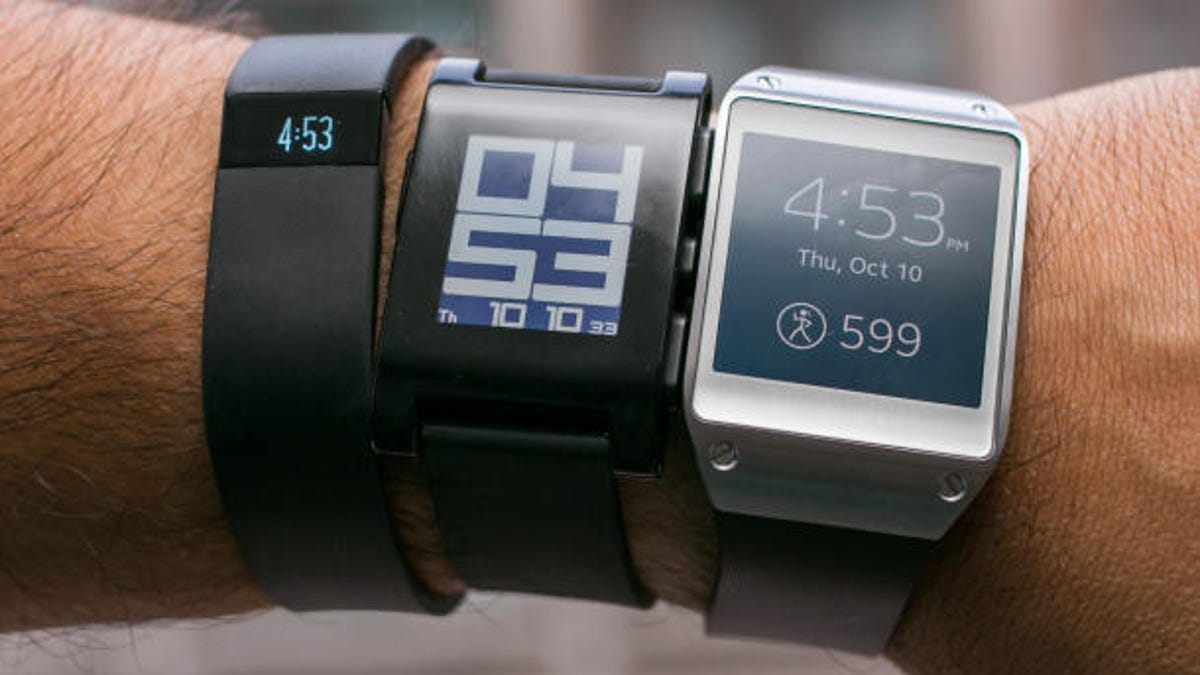Wearables are white-hot at CES 2014. So they're doomed, right?
A look back at past hot trends at the consumer electronics mega-event reveals an awful lot of mega-fails.

LAS VEGAS -- This year's Consumer Electronics Show will see dozens upon dozens of wearable technology products vie to become this year's breakout device.
And most -- if not all -- will be forgotten in the coming months.
That's because when all the booths are taken down, the convention lights are dimmed, and the last of the tech executives board their flights, we all finally escape the reality-distortion field that is Las Vegas and CES.
See also: CES 2014: What to expect
A look back at past confabs shows that the hot item at CES is a leading indicator of failure for the rest of that year. Remember how 3D televisions were supposed to be all the rage? Or when ultrabooks were a thing? Not only does garnering hype at CES not guarantee success, it's become almost an omen of ill fortune.
This year, it's universally agreed upon that wearable tech is the trend for CES, which means there will be a lot of also-rans and me-too products alongside a few gems that may or may not get noticed. The Consumer Electronics Show is a hectic and frenetic place -- we have only so much time to devote to any given product.
Chances are, that blockbuster product won't be found at the show.
"I do believe that we will have wearables that break through to mainstream consumers this year, and I'll be watching for it at CES, but I'm not necessarily expecting to find it," said Avi Greengart, an analyst for Current Analysis.
A stroll down memory lane
Let's turn the clock back to CES 2010, when two hot product categories emerged: 3D televisions and e-readers.
Well, we both know where they went. The television industry expected 3D to drive the next wave of adoption, similar to how high-definition became a must-have feature in the home. Unfortunately, the lack of 3D programming, expensive and clunky glasses, and general consumer apathy dropped it from a marquee feature to just another bullet point on the side of the box.
The failure of 3D was evident the following year, when manufacturers changed the story and focused on being "smart." That's not to say it's completely dead: 3D capability is now included in all but the lowest-end television.
The rise of e-readers, meanwhile, came after the success of the original Amazon Kindle. Aside from the Kindle, and arguably the Nook from Barnes & Noble, few other e-readers made a real impression on consumers. As is often the case with products at CES, many of them never actually made it to the market.
In 2011, one of the marquee products of the show was the Motorola Xoom. It was the first tablet running a version of Android -- known as Honeycomb, or version 3.0 -- that was specifically designed to work with tablets.
Despite a ton of hype and decent marketing support from partner Verizon Wireless, the tablet was a flop, and was indicative of several me-too Android tablets that ended up failing that year.
While Android tablets have since made decent inroads, most notably the Nexus 7, that first year was pretty rough for Android.
In 2012, ultrabooks were supposed to revitalize the ailing PC market. Intel poured truckloads of money into the slimmer, more power efficient laptops that aped Apple's hit MacBook Air.
Ultrabooks didn't exactly disappear, but they didn't really motivate anyone to switch computers unless they absolutely had to. The seemingly shifting definition of "ultrabook" was also a bit confusing, and it's no surprise that many manufacturers have gotten away from that terminology.
As a result, PC sales continue to see declines despite the ultrabook push, or even the move to Windows 8, for that matter.
Last year saw the rise of interesting gaming devices and peripherals. The Oculus Rift offered an intriguing, albeit unfinished, virtual-reality product. The Razer Edge was lauded, but was nothing more than an extremely niche gaming tablet. Nvidia shocked everyone with its own Shield handheld gaming device, but it too has failed to interest consumers.
Where wearables will go
In many of the categories, there do tend to be winners that emerge. Clearly, the tablet business is doing well, particularly with the success of Apple's iPad, the Nexus 7 from Asus, and a myriad of tablets from Samsung Electronics. As mentioned, the Kindle and Nook were hit e-readers.
But there's one thing they all have in common: none of them debuted at CES.
That's not to say there haven't been hit products that emerged there. The original Xbox from Microsoft made its first appearance at the show. And DVDs and Blu-Rays were hot trends that first popped there.
This year, likely making their debut will be a number of updated wearables from folks like Fitbit and Pebble, as well as a rumored new entry by giants such as LG.
But as with those other categories, the real noise with wearables will likely be made outside of the show. Remember, products like the Nike FuelBand were announced away from CES. The Galaxy Gear, which marks the first major attempt to push a smartwatch into the mainstream, was introduced in September. Samsung is expected to launch another Gear shortly, but it won't be at CES.
And don't forget Apple and those persistent iWatch rumors.
As for eyewear, Google has already set the pace with Google Glass, and we'll likely see more clones at the show.
The key to a successful piece of wearable technology, Greengart said, is the integration of different services such as the cloud and mobile platforms. Which is why even with all the different players at CES, an Apple, Google, or Microsoft may still end up with the better product.
So as with every year at CES, please mind the hype when walking on to the show floor.

